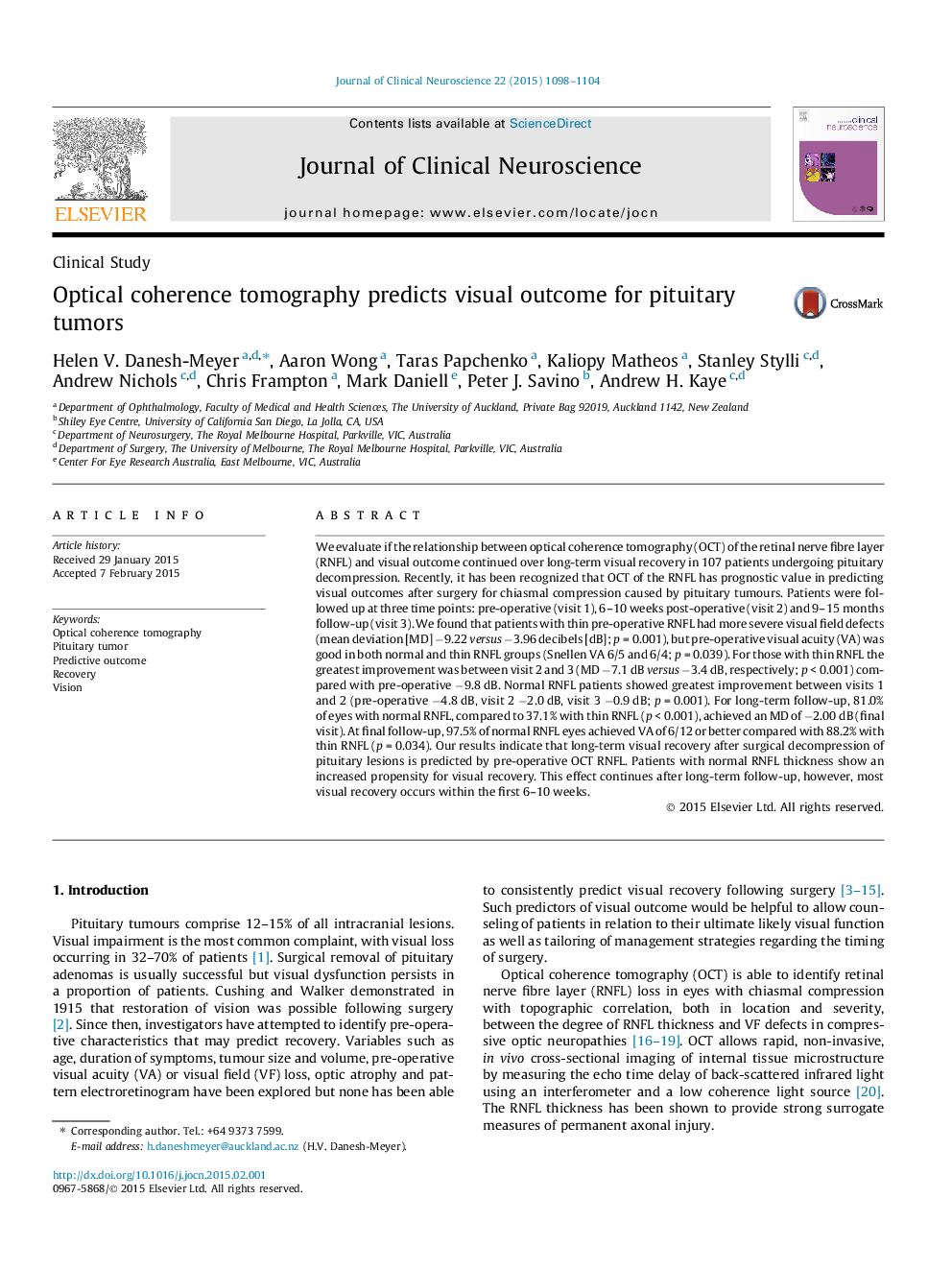| کد مقاله | کد نشریه | سال انتشار | مقاله انگلیسی | نسخه تمام متن |
|---|---|---|---|---|
| 3059016 | 1187419 | 2015 | 7 صفحه PDF | دانلود رایگان |
We evaluate if the relationship between optical coherence tomography (OCT) of the retinal nerve fibre layer (RNFL) and visual outcome continued over long-term visual recovery in 107 patients undergoing pituitary decompression. Recently, it has been recognized that OCT of the RNFL has prognostic value in predicting visual outcomes after surgery for chiasmal compression caused by pituitary tumours. Patients were followed up at three time points: pre-operative (visit 1), 6–10 weeks post-operative (visit 2) and 9–15 months follow-up (visit 3). We found that patients with thin pre-operative RNFL had more severe visual field defects (mean deviation [MD] −9.22 versus −3.96 decibels [dB]; p = 0.001), but pre-operative visual acuity (VA) was good in both normal and thin RNFL groups (Snellen VA 6/5 and 6/4; p = 0.039). For those with thin RNFL the greatest improvement was between visit 2 and 3 (MD −7.1 dB versus −3.4 dB, respectively; p < 0.001) compared with pre-operative −9.8 dB. Normal RNFL patients showed greatest improvement between visits 1 and 2 (pre-operative −4.8 dB, visit 2 −2.0 dB, visit 3 −0.9 dB; p = 0.001). For long-term follow-up, 81.0% of eyes with normal RNFL, compared to 37.1% with thin RNFL (p < 0.001), achieved an MD of −2.00 dB (final visit). At final follow-up, 97.5% of normal RNFL eyes achieved VA of 6/12 or better compared with 88.2% with thin RNFL (p = 0.034). Our results indicate that long-term visual recovery after surgical decompression of pituitary lesions is predicted by pre-operative OCT RNFL. Patients with normal RNFL thickness show an increased propensity for visual recovery. This effect continues after long-term follow-up, however, most visual recovery occurs within the first 6–10 weeks.
Journal: Journal of Clinical Neuroscience - Volume 22, Issue 7, July 2015, Pages 1098–1104
